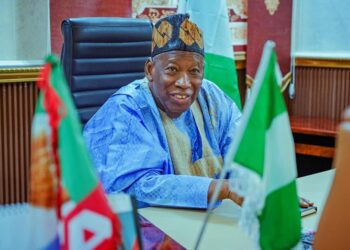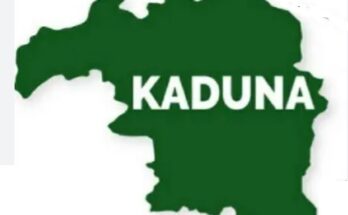The administration of President Muhammadu Buhari began on a positive note with electricity generation and distribution improving significantly, a development many Nigerians attributed to “body language” of Mr President. But the celebration did not last long before reality dawned on Nigerians that the rise in water level of the Dams as a result of rainfall and not much of body language was responsible for the noticeable improvement. MUSA ADAMU writes.
Arriving the Ministry of Power, Babatunde Fashola, the Minister of Power, did not leave any one in doubt as to the question of whether he understands the sector he was moving into.
Fashola started his assignment by doing what any reasonable student would do when presented with a question paper; took his time to understand the problem in the electricity sector and drew up his strategy for confronting it.
Tariff hike as the first litmus test
Before rolling out his plans for the sector however, Fashola’s first baptism of fire was the pending increase in tariff as approved by then Sam Amadi-led Nigerian Electricity Regulatory Commission (NERC). To the dismay of many pro-change Nigerians, Fashola did not only support the new regime of tariff champion the campaign to make Nigerians buy-into the argument for the tariff.
As expected, it was a hard sale for even the Fashola, a known orator who could sell ice to the Eskimo. The National Assembly ordered Distribution Companies (DisCos) not to implement the new tariff, civil society organisations threatened fire and brimstone, actions were instituted in court and a judgment was actually gotten ordering the suspension of the implementation, but all to no avail.
Championing the argument for the increase before the Senate, the Minister justified the 45 percent increment in electricity tariff, stressing that the action remained the only way to enhance stable power supply in the country.
He argued before the Senate Committee on Power, that the Act actually empowers the NERC to increase tariff, hence the NASS would not be able to stop the implementation at this stage.
He said, “Electricity is a product, it is made from raw materials, some of the raw materials are gas, some of the raw materials are power plants they are also related. So, the issue of tariff is not the single issue of price, when the raw materials go up, the price cannot stay the same.”
Fashola maintained that the federal government and the consumer had a duty to sustain the current tempo in the power sector by encouraging the firms which are generating power to produce maximally at the right price.
Extreme convert?
To further illustrate how Fashola was so bought over by the proponents of the tariff hike, the minister, who is also a minister in the temple of justice, a learned silk (Senior Advocate of Nigeria), disobeyed court order validly issued by a competent court of jurisdiction in the process.
A Federal High Court sitting in Lagos had refused an application by the NERC, seeking to stay further proceedings in the suit challenging the hike in electricity tariff by DisCos.
The suit was instituted by a lawyer and rights activist, Toluwani Adebiyi, following which the court had restrained parties to maintain status-quo.
NERC and DisCos had gone ahead on February 1, 2016 to hike tariff in electricity, despite the subsisting order.
NERC had asked the court to stay proceedings until its appeal against two previous rulings delivered by the Judge was heard and determined by the Court of Appeal.
Justice Idris had in one of the rulings barred NERC from implementing any upward review in electricity tariff pending the hearing and determination of the suit.
The Roadmap
The minister finally unveiled a roadmap for boosting electricity generation through incremental power, saying that the government was looking at what the country could generate out of the existing power assets.
He declared his findings thus: “The problems have been identified as either damaged, unmaintained or unserviced turbines in the hydro power plants, and in the cases of gas plants, it is largely non-availability of gas, coupled with lack of maintenance.”
Explaining how he came by this conclusion, at a public lecture in Lagos, Fashola reeled out his findings, stating that the country had 26 power plants, with three powered by water in Jebba, Kainji and Shiroro, while the rest of the plants are powered by gas.
According to him, the country has 140 turbines with installed capacity of 12,341mw, adding however, that at the best of times, only about 78 turbines generate power, which had resulted in February 2, 2016 peak of 5,074mw.
“The Jebba Hydro power plant, which was commissioned in 1985 by President Muhammadu Buhari with six turbines to provide 540mw of power, were to be overhauled once every 5-6 years but this was never done for 28 years, until it was handed over in 2013, in the aftermath of the privatisation.”
According to him, the first overhaul has now been completed and more will be undertaken and described this effort as incremental power.
Fashola, whose lecture was on ‘Nigeria’s Electricity Challenge: A Roadmap for Change,’ also noted that in a report submitted to his office by the concessionaire of Jebba and Kainji, the total available capacity of the two plants is 482mw and 340mw respectively, totaling 822mw.
He further stated that when the Egbin Power plant in Ikorodu, which was delivered in 1985 during the tenure of Babangida had six turbines with total capacity of 1,320mw but when it was handed over in 2013, it had only two functional turbines of 400mw generating capacity.
“I was at the plant in December 2015, to switch on Turbine 6, which means all the six turbines have been restored. This is incremental power. But these are just examples of the maintenance and technical challenges we grapple with daily in the government from the President, to the Vice-President, and the Ministry which seek to manage the men and women. Let me share with you some of the human and administrative challenges, relating to incremental power.”
Budget
With the signing into law of the 2016 appropriation Act, the stage is now set for the minster, who most Nigerians love to describe as Buhari poster boy, giving his three in one portfolio in the government, to implement his plans for the benefit of all Nigerians.
Indeed, since it will be most uncharitable for discerning Nigerians to attempt judging the minster under the first year of the administration since its first budget just came into life, the next one year will be more than enough a period for even the most ardent believer in the mister to make up his mind.



